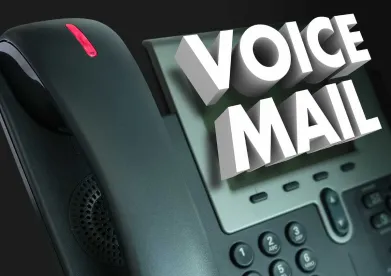In February of this year, Federal Communications Commission (“FCC”) Chairwoman Jessica Rosenworcel announced that she had submitted a proposal to her colleague Commissioners to regulate “ringless voicemails” to wireless phones under the Telephone Consumer Protection Act (“TCPA”). She noted that “‘[r]ingless voicemail can be annoying, invasive, and can lead to fraud like other robocalls—so it should face the same consumer protection rules…’” The proposal would require that “callers to obtain a consumer’s consent before delivering a ‘ringless voicemail,’ a message left in their mailbox without ringing their cell phone.”
On November 21, 2022, the FCC released a unanimous Declaratory Ruling and Order (“Ruling”) finding that “‘ringless voicemail’ to wireless phones requires consumer consent because it is a ‘call’ made using an artificial or prerecorded voice and thus is covered by section 227(b)(1)(A)(iii) of the 1991 Telephone Consumer Protection Act…” The FCC acted even though All About the Message (“AATM”), who filed the initial petition arguing for various reasons that the TCPA did not apply to ringless voicemail, filed a letter to withdraw the request. The agency noted “substantial attention from commenters, and members of Congress, and the applicability of the TCPA to ringless voicemail technology has been the subject of considerable recent litigation…” warranted addressing the issue. Indeed, the FCC’s Consumer and Governmental Affairs Bureau received over 8,000 comments and replies in connection with the AATM petition, almost all in opposition.
The FCC declared that AATM’s ringless voicemail technology was a “call” under the TCPA for the same reasons that the FCC found in 2015 that computer-generated text messages sent to a carrier’s text server were calls for TCPA purposes. The fact that the “calls” were directed to the consumer’s wireless telephone number was a key fact – “the telephone number assigned to a consumer’s wireless phone and associated with the voicemail account is a necessary and unique identifier for the consumer in the ringless voicemail context.” The agency concluded that its Ruling is consistent with the ordinary meaning of “call” and the legislative history and purpose of the TCPA.
Among other things, the Commission rejected the AATM argument that ringless voicemail is “non-invasive.” The agency’s Ruling noted: “As the commenters and complainants explain, consumers cannot block these messages and consumers experience an intrusion on their time and their privacy by being forced to spend time reviewing unwanted messages in order to delete them. The consumer’s phone may signal that there is a voicemail message and may ring once before the message is delivered, which is another means of intrusion. Consumers must also contend with their voicemail box filling with unwanted messages, which may prevent other callers from leaving important wanted messages.”
The Ruling, which became effective on its release, applies to “any entity that provides ringless voicemail using the end user’s mobile telephone number to direct the ringless voicemail message to a mailbox associated with the end user’s mobile phone.”




 />i
/>i
